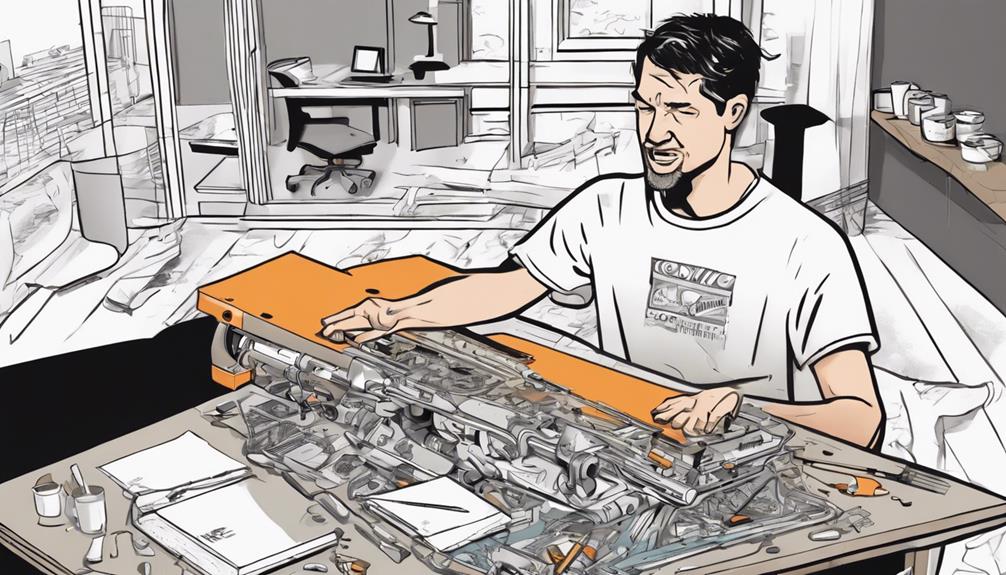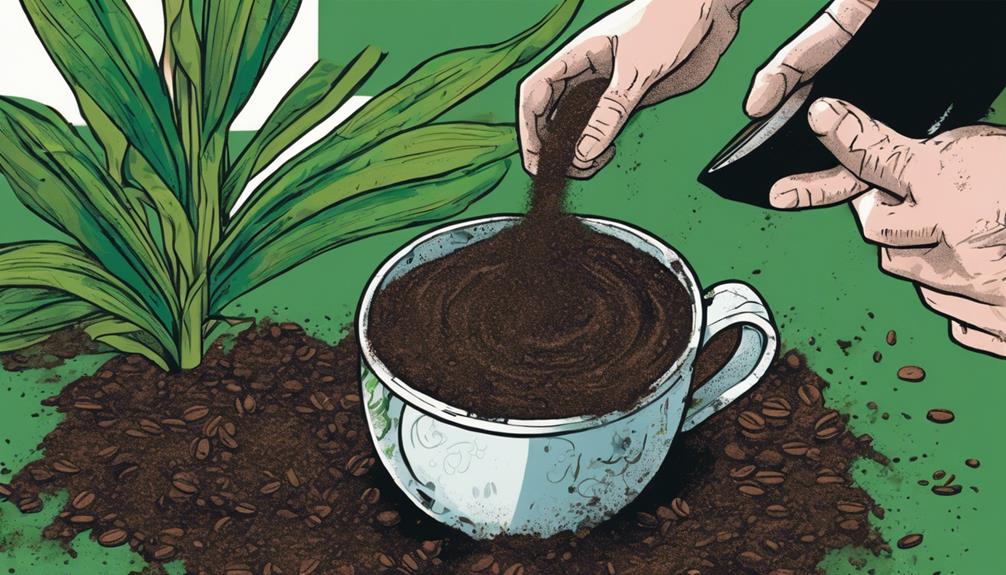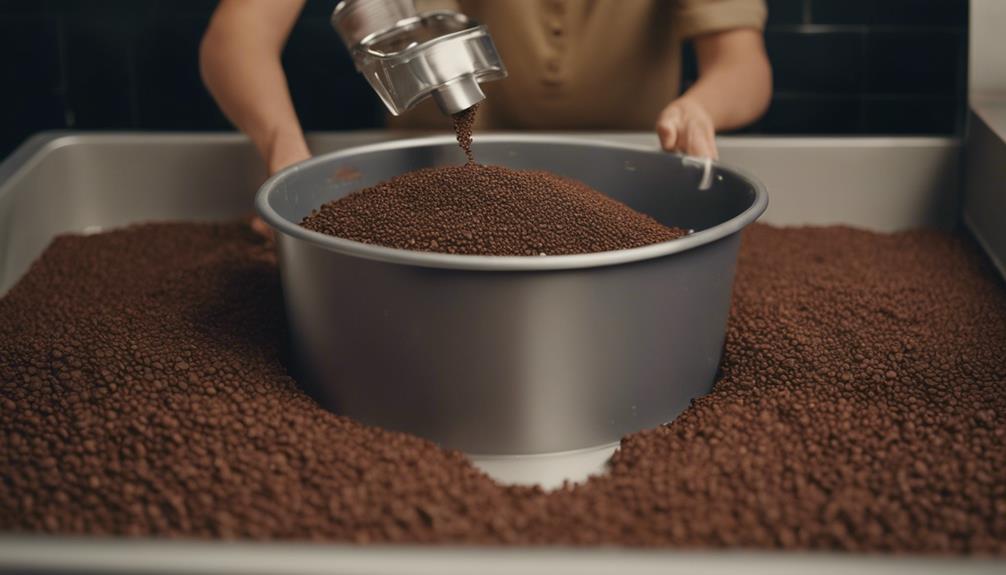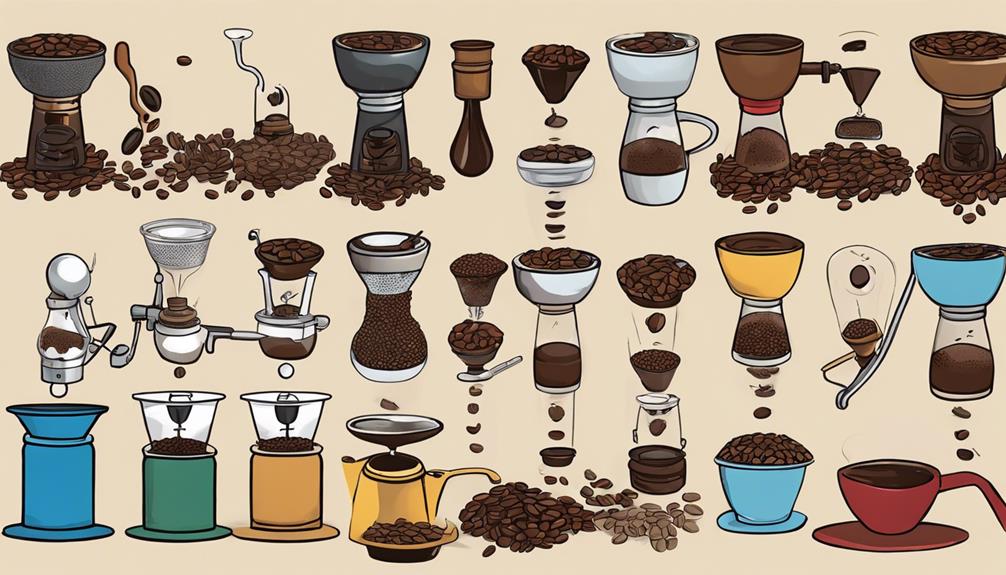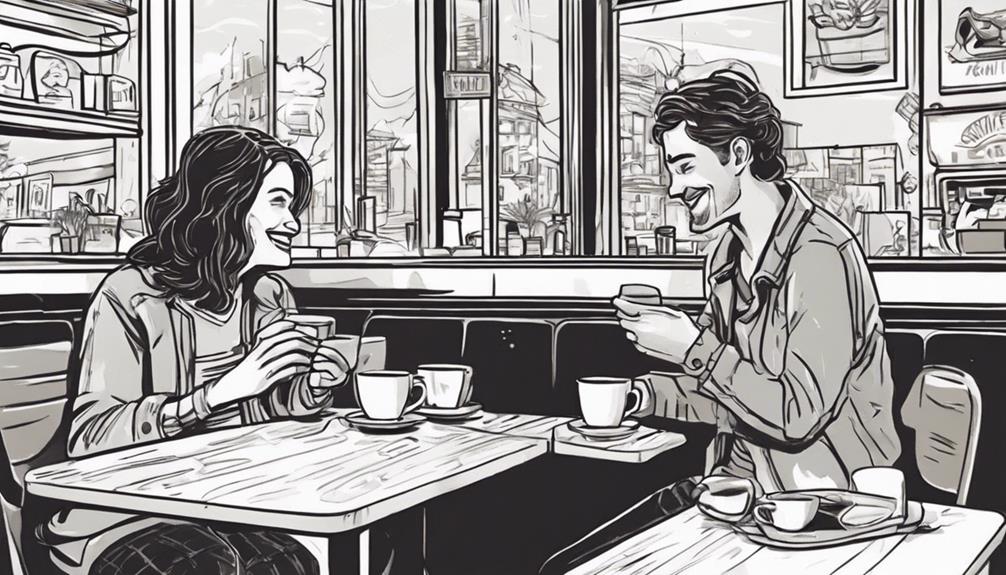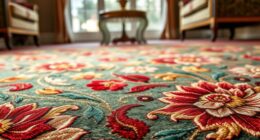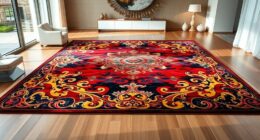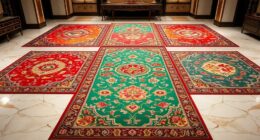Put together a coffee table effortlessly by following these steps: Begin with leg lamination and accurate stretcher alignment. Cut notches, drill pocket holes for hidden assembly, and add edge banding for a sleek finish. Construct a strong drawer box, install soft close slides, and attach a false front. Finish off with Danish oil, varnish, and secure top fasteners. By following these steps, along with using the appropriate tools such as a track saw and table saw, you can achieve a polished appearance. Prepare your plywood and two by fours; you are on your way to creating a beautifully crafted coffee table! For those looking to enhance their carpentry skills, consider assembling a noguchi coffee table. This iconic furniture piece requires precise measurements and expert craftsmanship to achieve its unique design. By following the same steps as standard coffee table assembly, while paying attention to the distinct curves and angles of the noguchi table, you can produce a striking and practical piece for your home. Invest in high-quality materials and tools, and take your time to ensure each step is carried out with precision and care. With dedication and patience, you can have a beautifully crafted noguchi coffee table that will stand out in your living space.
Key Takeaways
- Utilize pocket hole screws for strong and simple assembly.
- Incorporate edge banding for a clean and professional look.
- Follow step-by-step instructions for stress-free construction.
- Ensure precise measurements and accurate alignment.
- Use quality materials and tools for a smooth assembly process.
Materials and Components Used
To put together a coffee table, you'll need a single sheet of plywood, two by fours, adhesive, pocket hole screws, iron-on Edge banding, and various tools like a track saw, table saw, and thickness planer.
To start building the coffee table, begin by applying a thin layer of adhesive along the edges of the plywood pieces. Next, use pocket hole screws to securely fasten the two by fours to the plywood, forming the tabletop. Once the main structure is constructed, carefully apply the iron-on Edge banding to give the edges a polished finish.
The adhesive ensures a strong bond between the wood pieces, while the pocket hole screws provide structural support. The iron-on Edge banding not only adds a professional touch but also protects the edges from wear and tear over time.
These components, along with the precision of the tools used, contribute to creating a sturdy and aesthetically pleasing coffee table.
Leg and Stretcher Assembly
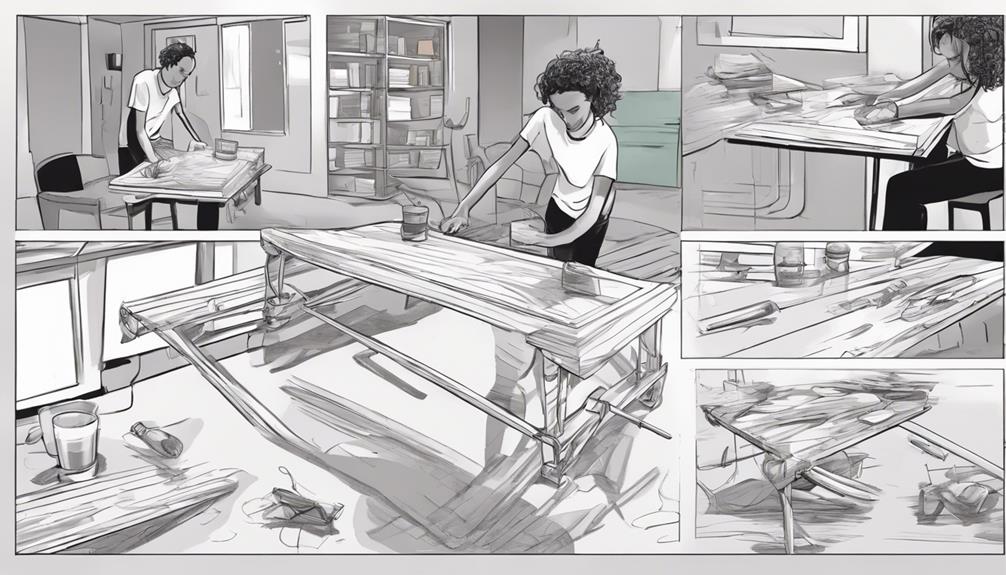
You can learn about the leg lamination technique used to create sturdy supports for your coffee table.
Additionally, discover the stretcher alignment method that guarantees a stable and balanced structure.
These points will guide you through the process of assembling the legs and stretchers of your coffee table efficiently.
Leg Lamination Technique
Consider reinforcing the coffee table's structure by laminating the legs using two by fours for added stability and strength. To achieve this, follow these steps:
- Remove Rounded Edges: Begin by removing the rounded edges from the two by fours to create a sleek and modern leg design.
- Utilize Pocket Holes: Use pocket holes for easy and secure assembly of the laminated legs, ensuring a strong connection.
- Align and Rip Stretchers: Align and rip the stretchers to the appropriate size for attaching to the legs, ensuring a perfect fit.
- Glue and Clamp: Apply glue to the laminated legs and clamp the stretchers in place, creating a sturdy and durable base for the coffee table.
Stretcher Alignment Method
When aligning the stretchers to the legs of the coffee table, utilize pocket holes for precise and secure attachment. This alignment method ensures that the stretchers are positioned accurately, contributing to the overall stability of the table. By using pocket holes, you can easily fasten the stretchers to the legs without the risk of misalignment or instability.
After aligning the stretchers, the next step involves gluing and clamping them to the panels. This process is essential for securely fastening the base of the coffee table and guaranteeing that the joints are strong and durable. Proper gluing and clamping techniques will enhance the overall structural integrity of the table, making it sturdy and long-lasting.
To achieve a seamless finish on the leg and stretcher assembly, consider adding filler to joints. Filler joints help conceal any gaps or imperfections, giving the coffee table a polished and professional look. By paying attention to these details during the assembly process, you can create a high-quality piece of furniture that will complement your living space beautifully.
Base and Shelf Construction
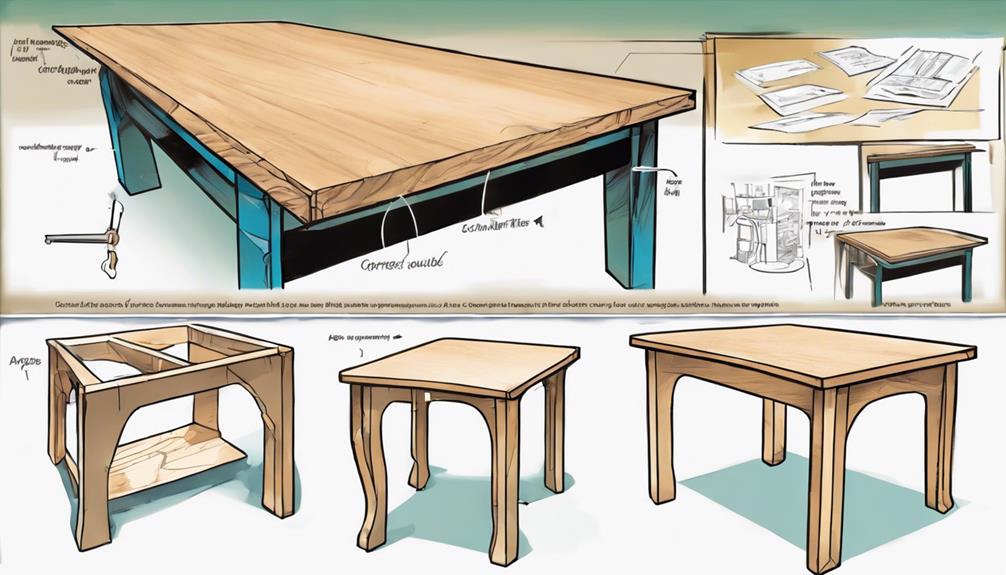
How are the base and shelf of the coffee table constructed for optimal stability and support?
To secure a sturdy foundation for your coffee table, follow these steps:
- Cut Notches: Create notches in the panels for attaching the base and shelf securely, providing a snug fit.
- Drill Pocket Holes: Utilize drilled pocket holes in the base and shelf to guarantee strong and hidden assembly, enhancing the overall stability.
- Add Edge Banding: Incorporate iron-on edge banding to give a clean and finished look to the edges, adding a little bit of finesse to the design.
- Secure Attachment: Attach the base and shelf to the coffee table using a combination of glue and screws, ensuring a secure and durable connection.
Drawer Construction and Installation
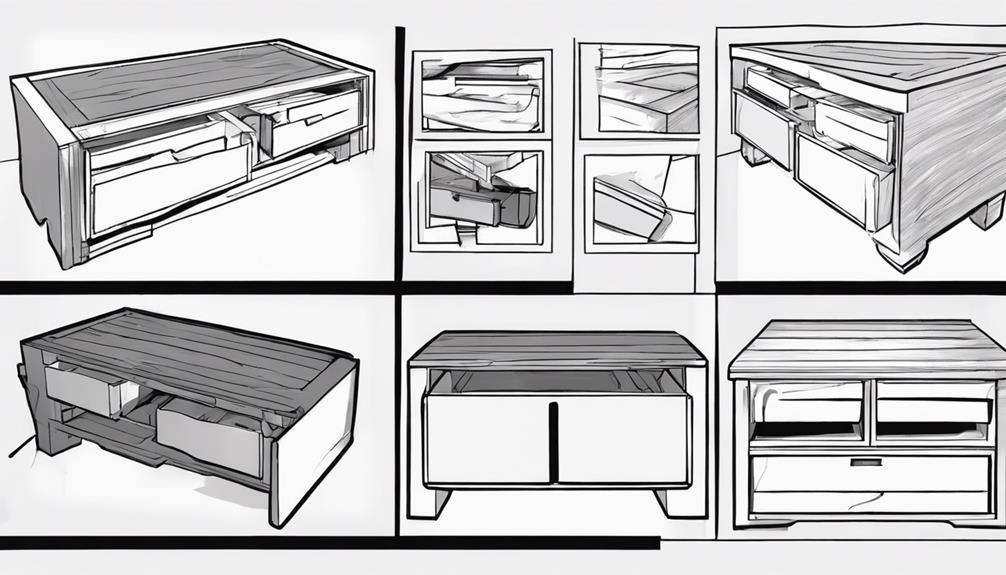
Construct the drawer box with precise fit rebates to guarantee a snug and functional assembly.
Using pocket holes for drawer assembly will provide a strong and secure connection for every single drawer component.
For smooth and quiet operation, install soft close ball bearing drawer slides.
To maintain the coffee table's aesthetic balance, create a false front for the drawer.
Attach the false front securely using pocket holes and screws for a visually appealing finish.
Finishing and Final Touches
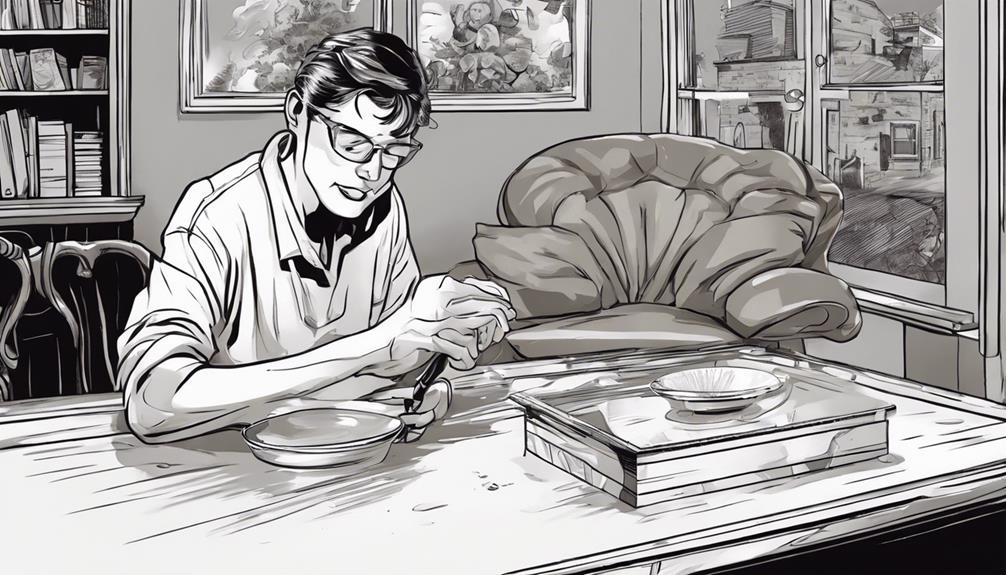
For a long-lasting and appealing finish on your coffee table, consider using Danish oil and varnish. Once the assembly is complete, it's time to add those finishing touches that will truly enhance the look of your furniture piece.
Here are some important steps to take:
- Attach the top using table top fasteners for a secure and professional appearance.
- Measure and drill handles for the drawers to make sure they're both functional and aesthetically pleasing.
- Test the soft close drawers to verify they move smoothly and quietly.
- Complete the coffee table by morticing slots using a biscuit jointer for Z-clips, caulking seams, applying knotting solution, and trimming the top to final size with a tracksaw before staining and varnishing.
Tools Needed for Assembly

You'll need various tools for assembling a coffee table, including a track saw for cutting plywood, a table saw for final cuts, and a thickness planer for shaping legs.
Additionally, gather wood filler putty for imperfections, biscuits for alignment, and soft close ball bearing drawer slides for smooth operation.
To join pieces securely, have glue and pocket hole screws ready, and use iron-on Edge banding for a polished edge finish.
When working on the legs and stretcher, utilize laminated two by fours, remove rounded edges, and make use of pocket holes for assembly.
Remember to cut notches for attachment, drill pocket holes for the base and shelf, and finally, test the coffee table for functionality and stability.
Techniques for Joinery
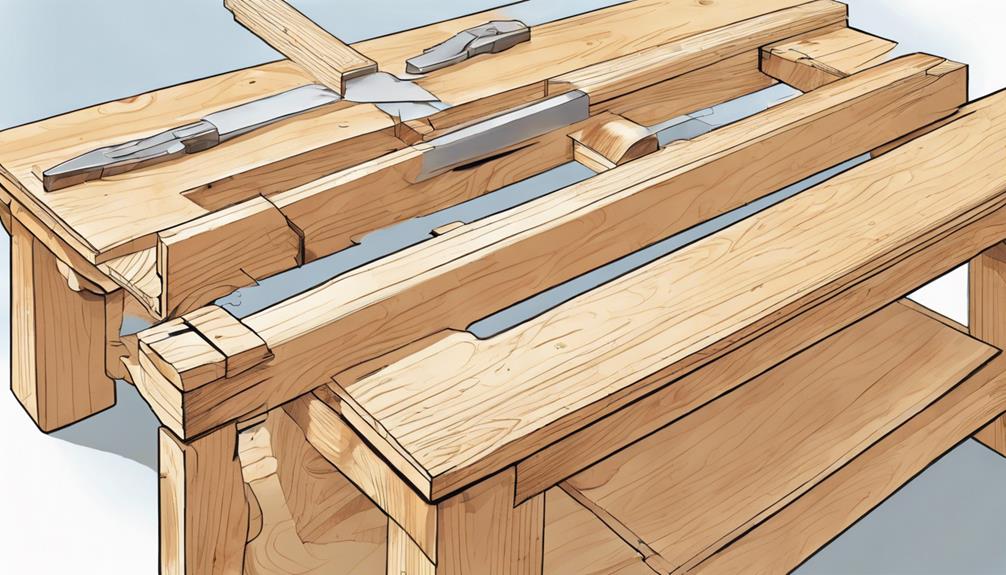
You can elevate your coffee table assembly by mastering various joinery techniques.
Pocket hole screws offer both strength and discretion for your joints.
Biscuits aid in alignment, while glue guarantees a sturdy bond between components.
Joinery Techniques Overview
An overview of joinery techniques commonly used in furniture assembly includes pocket holes, biscuits, and dowels. These techniques are crucial for creating strong and well-constructed furniture pieces like coffee tables.
Here are some key points about each technique:
- Pocket Holes: Provide strong and concealed connections between wooden pieces, guaranteeing a clean finish and robust structure.
- Biscuits: Small, oval-shaped wooden inserts that aid in aligning and reinforcing joints, resulting in improved stability and durability.
- Dowels: Cylindrical rods inserted into corresponding holes to create secure joints, enhancing the overall strength and longevity of the furniture piece.
- Importance of Joinery Techniques: Understanding and employing these various joinery techniques can greatly enhance both the structural integrity and visual appeal of furniture items, such as coffee tables. By utilizing the right technique for the job, you can significantly enhance a well-crafted and long-lasting piece of furniture for your space.
Joinery Tips and Tricks
Understanding various joinery tips and tricks can greatly enhance the quality and strength of your furniture construction projects. By incorporating techniques such as pocket hole screws, biscuits, mortise and tenon joints, dovetail joints, and dowels, you can elevate the durability and aesthetics of your woodworking endeavors.
To help you grasp these concepts better, here's a breakdown of some joinery tips and tricks:
| Joinery Technique | Description |
|---|---|
| Pocket Hole Screws | Ideal for strong and concealed joints in furniture assembly. |
| Biscuits | Aid in creating precise and stable joints by providing alignment during glue-ups. |
| Mortise and Tenon Joints | Offer added strength to furniture constructions through a traditional woodworking method. |
| Dovetail Joints | Known for their decorative appeal and durability, perfect for showcasing craftsmanship in projects. |
| Dowels | Provide simple yet effective joinery solutions for various furniture-making needs. |
Drawer Box Construction
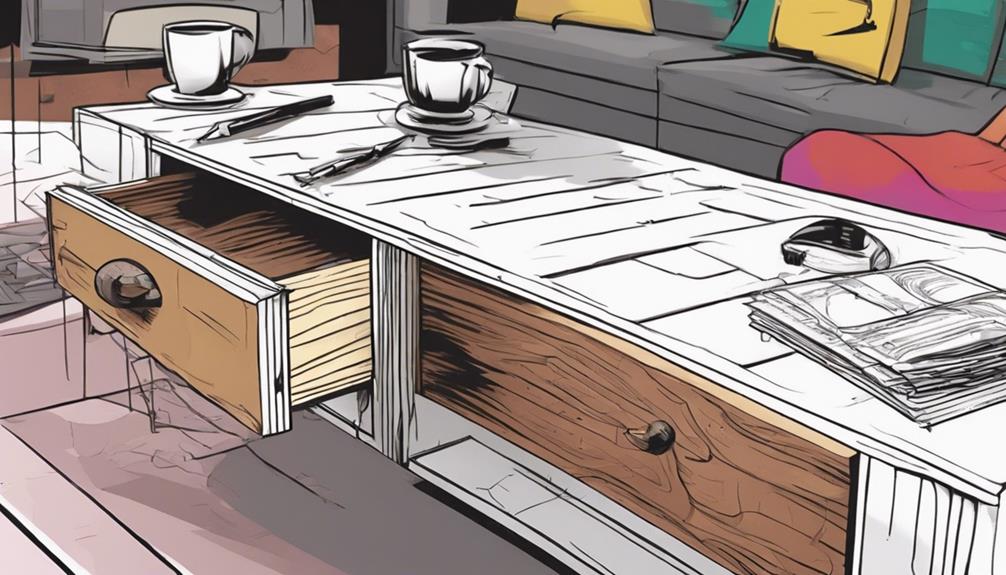
For a seamless and sturdy assembly, construct the drawer box with perfect fit rebates. This guarantees that the drawer fits snugly and functions smoothly within your coffee table.
To enhance the strength and stability of the drawer box, consider utilizing pocket holes during assembly. These holes provide an additional layer of reinforcement, making your drawer more durable in the long run.
When it comes to the operation of your drawer, opt for soft close ball bearing drawer slides. These slides not only allow for effortless opening and closing but also ensure a quiet and smooth user experience.
To maintain the aesthetic balance of your coffee table design, create a false front for the drawer. This false front can be attached securely using pocket holes and screws, giving your coffee table a cohesive and professionally finished look.
Top Attachment and Trimming
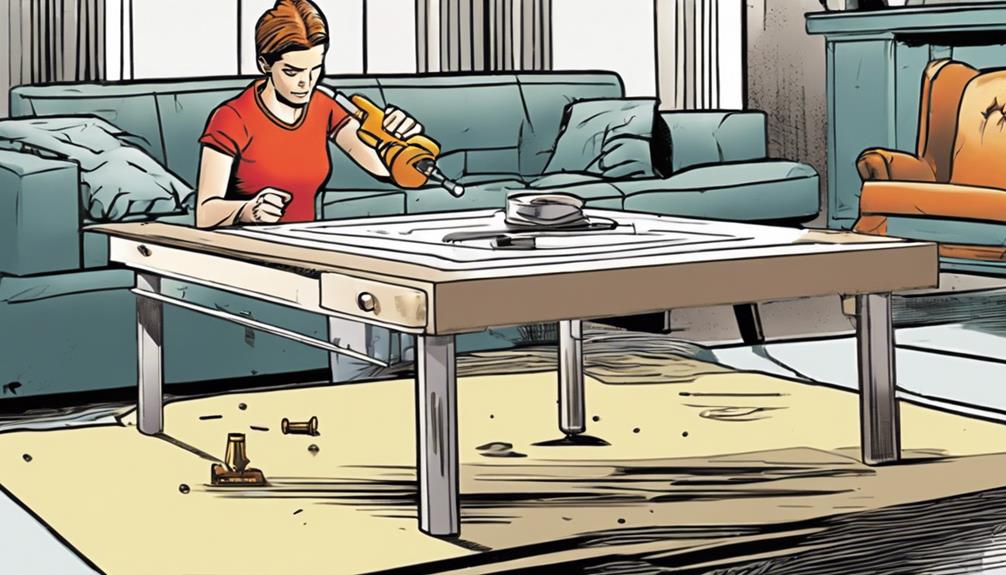
To securely fasten the top of your coffee table, utilize table top fasteners for an easy and stable attachment. These fasteners will guarantee that your table's top stays in place, providing a reliable surface for everyday use.
Once the top is attached, it's time to trim it to its final size. A track saw is the perfect tool for this task, allowing you to make precise cuts with ease and achieve a clean finish.
After trimming the top, consider enhancing the wood's natural beauty by applying a coat of Oak stain. This won't only bring out the richness of the wood but also add a touch of elegance to your coffee table.
To protect the stained top from daily wear and tear, seal it with varnish. This step will prolong the life of your coffee table and maintain its lustrous appearance.
Frequently Asked Questions
How to Attach Legs to a Table Without an Apron?
To attach legs to a table without an apron, start by using pocket holes for hidden and secure attachment. Guarantee stability by aligning and ripping stretchers to size, then glue and clamp them to the panels. Fill imperfections with wood filler for a polished finish.
How to Stop a Wood Table Top From Splitting?
To stop a wood table top from splitting, seal or finish it to prevent moisture damage. Apply wood conditioner before staining. Maintain steady humidity levels. Avoid placing hot/wet items directly on it. Regularly check for cracks and act promptly.
How Can I Make My Cheap Table More Stable?
To make your cheap table more stable, add a second set of legs or strengthen the base with thicker support beams. Attach adjustable leveling feet for uneven floors, use corner braces, and apply adhesive rubber pads to prevent slipping.
How to Attach a Table Top Without Screws?
To attach a table top without screws, use table top fasteners like Z-clips or figure-eight fasteners. They slide into mortice slots in the aprons for a secure hold. It's a breeze, giving your coffee table a sleek finish!
Conclusion
To sum up, assembling this coffee table is a breeze with the right tools and techniques. By following the step-by-step instructions provided, you can easily put together a stylish and functional piece of furniture for your home. The functional lift top coffee table not only provides ample storage space for your living room essentials, but it also adds a contemporary touch to your decor. With its durable construction and versatile design, this coffee table is sure to become a staple in your home. Whether you’re enjoying a morning cup of coffee or hosting a gathering with friends, this piece will serve as the perfect centerpiece for your living space.
From leg and stretcher assembly to drawer construction and finishing touches, each step builds upon the last to create a cohesive and sturdy coffee table.
So grab your tools and get started on creating the perfect addition to your living space!
